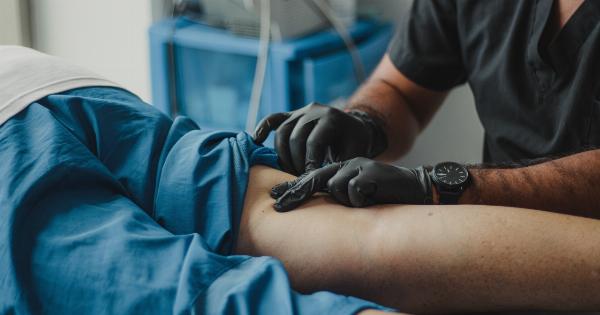Knee arthroplasty, commonly known as knee replacement surgery, is a surgical procedure performed to alleviate pain and restore mobility in individuals with severe knee joint damage or deterioration.
Over the years, advancements in medical technology and surgical techniques have led to the development of innovative approaches to knee arthroplasty. These approaches aim to improve patient outcomes, reduce post-operative complications, and enhance the overall success rate of the procedure. This article explores some of the innovative approaches used in knee arthroplasty today.
1. Minimally Invasive Knee Arthroplasty
Minimally invasive knee arthroplasty is a technique that involves smaller incisions and less tissue disruption compared to traditional knee replacement surgery.
This approach reduces post-operative pain, shortens hospital stays, and accelerates recovery. The surgeon utilizes specialized instruments and advanced imaging techniques to perform the procedure with precision and minimal tissue damage.
2. Computer-Assisted Knee Arthroplasty
Computer-assisted knee arthroplasty, also known as computer-assisted surgery (CAS) or navigation surgery, utilizes computer technology to assist the surgeon throughout the procedure.
The system provides real-time information about the knee joint’s anatomy, alignment, and positioning of implants. This technology aids the surgeon in achieving precise alignment, resulting in improved implant longevity and better functional outcomes.
3. Robotic-Assisted Knee Arthroplasty
Robotic-assisted knee arthroplasty is a cutting-edge technique that combines computer navigation and robotic systems. The surgeon uses a robotic arm, controlled by advanced software, to prepare the joint and position the implants accurately.
This technology enables the surgeon to achieve precise cuts, enhance implant alignment, and optimize patient-specific outcomes.
4. Customized Knee Arthroplasty
Customized knee arthroplasty involves the use of patient-specific implants and instruments. The surgeon utilizes preoperative imaging and computer simulations to create personalized surgical plans for each patient.
These plans guide the fabrication of customized implants that match the patient’s unique anatomy, resulting in better fit, stability, and improved function.
5. Mobile-Bearing Knee Arthroplasty
Mobile-bearing knee arthroplasty involves the use of a polyethylene insert that allows the bearing surface to rotate and move with the patient’s natural joint motion.
This design mimics the anatomical movement of a healthy knee joint, reducing wear and stress on the implant. Mobile-bearing implants may lead to better long-term outcomes and increased longevity of the implant.
6. Implant Coating Innovations
Implant coatings have evolved to improve bone-implant integration and long-term stability.
Innovations such as porous coatings, hydroxyapatite coatings, and advanced surface treatments promote better osseointegration and reduce the risk of implant loosening. These coatings enhance the longevity and performance of knee implants, leading to improved patient satisfaction.
7. Advanced Biologic Techniques
Advancements in biologic techniques have opened new avenues in knee arthroplasty.
Stem cell therapy, platelet-rich plasma (PRP), and other biologic agents have shown potential in promoting tissue repair, reducing inflammation, and enhancing post-operative recovery. These techniques hold promise for improving outcomes in knee arthroplasty by facilitating tissue healing and regeneration.
8. Rapid Recovery Protocols
Rapid recovery protocols encompass a comprehensive approach to optimize all aspects of the patient’s perioperative care.
These protocols involve preoperative education, multimodal pain management strategies, early mobilization, and enhanced rehabilitation techniques. By focusing on enhancing recovery and minimizing complications, rapid recovery protocols aim to expedite the return to normal activities and improve patient satisfaction.
9. Patient-Specific Instrumentation
Patient-specific instrumentation involves developing surgical guides and instruments tailored to each patient’s unique anatomy.
By utilizing preoperative imaging and computer-aided design (CAD) technology, accurate and patient-specific instruments are created to aid the surgeon during the procedure. This approach enhances surgical precision and reduces surgical time, potentially leading to improved outcomes.
10. Outpatient Knee Arthroplasty
Outpatient knee arthroplasty, also known as same-day or ambulatory knee replacement surgery, allows eligible patients to undergo the procedure with a shorter hospital stay.
Advances in anesthesia, pain management, and rapid recovery protocols have made this approach feasible for select patients. Outpatient knee arthroplasty offers the advantages of reduced healthcare costs, faster recovery, and reduced risk of hospital-acquired infections.




























